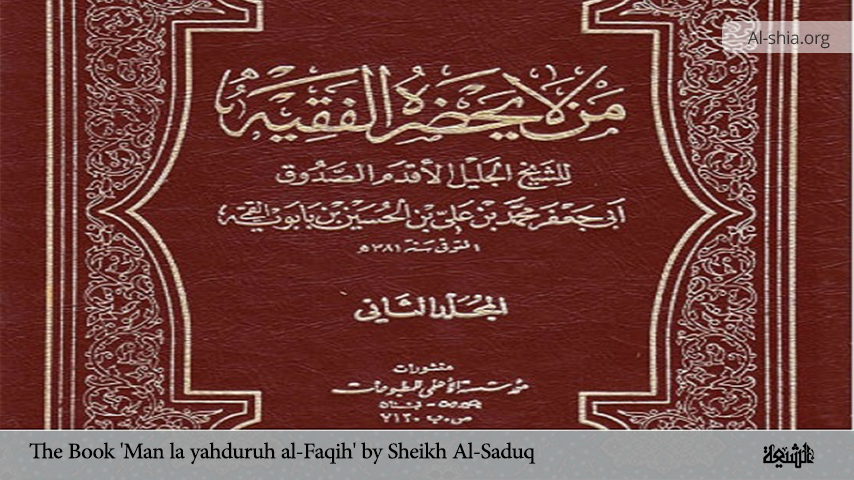The tradition of two precious things (Hadith Thaqalayn) and the tradition of Noah’s Ark (Hadith Safinah) are among the prominent traditions of the Holy Prophet (s.a.w.a) that emphasize the esteemed status of the Prophet’s Household (i.e. Ahl al-Bayt). In this article, we shall focus on the documentation and contents of the tradition of thaqalayn and Noah’s Ark.
The Documentation of the Tradition of Thaqalayn
One of the famous Traditions among the ‘ulama of the Sunnis and Shiites is the Tradition of Thaqalayn. A large group of the Companions, without any break, recorded this Tradition from the Prophet and some of the great ‘ulama say that 30 of the Companions have mentioned it (1). A large group of recorders have mentioned this in their books and there can be no doubt as to this tradition.
The great scholar, Sayyid Hashim Bahrani, in his book, Ghayat al-Maram, mentions this Tradition with 39 documentations from Sunni scholars and 80 documentations from the Shi’ite ‘ulama. Mir Hamad Husayn Hindi, another great scholar who studied this issue further, mentioned 200 Sunnis who have recorded this Tradition and he has compiled them into 6 volumes.
Among the individuals of the famous Companions who have recorded this are Abu Sa’id Khudari, Abu Dharr Ghifari, Zayd ibn Arqam, Zayd ibn Thabit, Abu Rafa’, Jabir ibn Matam, Huzaifah, Damarah Islami, Jabir ibn Abdallah Ansari and Umm Salimah.
The basic Tradition, according to Abu Dharr Ghifari, is that once when he was in the Ka’bah, he turned to the people and said that he heard that the Holy Prophet had said “I leave two things of value among you: the Qur’an and my family. These two will never separate from each other until they enter unto me in the Fountain of Abundance (Kawthar) in Paradise. Thus, take care to follow what I have recommended” (2).
This Tradition is found in the most reliable of Sunni sources such as Sahih Tirmidhi Nisai, Musnad Ahmad, Kanz al-Amal and Mustadrak Hakim, etc. In many of the books, this Tradition has been called Thaqalayn (two valuable things) and in some, it is called khalifatain or two successors which do not differ in meaning. It is interesting to note that in the various Traditions of Islam, this verse has been used by the prophet for the people on different occasions.
In the Tradition of Jabir ibn Abdallah Ansari, we read that he said this on the Hajj on the day of Arafah. It is recorded in a Tradition of Abdallah ibn Khattab that in Juhfah (an area between Mecca and Medina where some of the pilgrims enter the state of ihram). It is recorded in a Tradition of Umm Salimah where this is said at Ghadir Khum. It is recorded in a part of the Tradition during the last days of his blessed life, while he was on his deathbed.
It is recorded in a Tradition he said this upon the pulpit in Medina (3). Even famous Sunni scholars mentioned, it ibn Hajar in his book, Sawaiq al-Mahraqah says from the Holy Prophet, “The Holy Prophet of Islam, after saying this Tradition, took ‘Ali’s hand and pulled him up and said, ‘It is ‘Ali and the Qur’an and the Qur’an and ‘Ali. They will not separate from each other until they enter unto me in the Fountain of Abundance” (4).
In this way, it becomes clear that the Prophet has expressed this as a principle many times and emphasized this and that he made use of many opportunities to express it so that it would never be forgotten.
The Content of the Tradition of Thaqalayn
Here, several points should be noted:
1. The introduction to the Qur’an and his family as ‘two caliphs’ or ‘two valuable things’ is clear proof that Muslims must never turn away from these two, especially with the condition in many Traditions where it states that, “If these two are released or freed from each other, you will be lost.”
2. Placing Qur’an beside his family and his family beside Qur’an is proof that as the Holy Qur’an will never be altered and that it will be preserved, the family of the Holy Prophet had the position of infallibility.
3. In some of these Traditions, it has been stated that the Prophet said, “On the Day of Resurrection, I will question you about how you behaved towards these two great souvenirs, to see how you have acted towards them.
4. No matter how we interpret the Ahlul Bayt, ‘Ali is the best confirmation. According to the repeated Traditions, he will never be separated from the Holy Qur’an nor Qur’an from him. In addition to this, in the repeated Traditions, we read that when the verse was revealed about Mubahilah, the Holy Prophet called ‘Ali, Fatimah, Hasan and Husain, peace be upon them, and said, ‘This is my Ahlul Bayt.’ (5)
5. Even though it is not clear to us who are enclosed in this world what will be questioned of us, but on the Day of Judgment, we know from the Traditions, that the meaning of the Fountain of Abundance which is a special stream in Paradise with many special privileges is for the real believers, the prophets and the Ahlul-Bayt and the followers of that school. From what has been said, it becomes clear that the leadership of the ummah of Muslims after the Prophet is through ‘Ali and after him, also, through the Imams from this family.
The Tradition of Noah’s Ark
An interesting statement is recorded from the Holy Prophet, in both Sunni and Shi’ite books on Traditions, which is the famous Tradition of Noah’s ark. In this Tradition, Abu Dharr says, “The Prophet said, ‘My family is like Noah’s ark. Whoever uses it will be saved and whoever separates from it will drown.” (6)
This Tradition, which is also among the famous Traditions and mentions the necessity for the people to follow ‘Ali and the family of the Prophet after his death, has been emphasized. Noting that the ark of Noah is a place of refuge and a means of salvation for when the great storm comes, this truth becomes clear that the Islamic ummah will be saved in the storm which came after the death of the Prophet through the Ahlul Bayt.
NOTES:
__________________________________
1. Sirah Halabi, vol. 33, p. 308
2. Recorded from Jama’ Tirmidhi as from Yanabi’al-Mawwadah, p. 37
3. al-Murajat, p. 42
4. al-Sawa’iq al-Muhriqah, p.75
5. Mashkat al -Masbaih, p. 568, printed in Delhi and Riyadh al-Nafarah, Vol. 2, p. 248, recorded from Muslim and Tirmidhi
6. Mustadrak Hakim, vol.3, p. 151

















